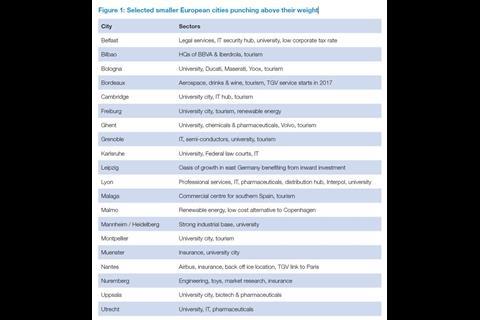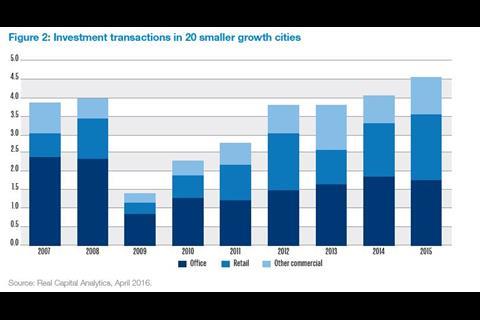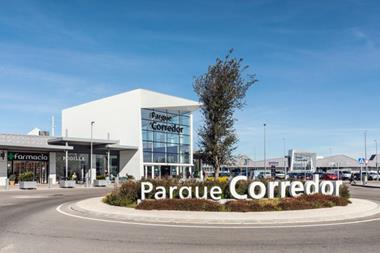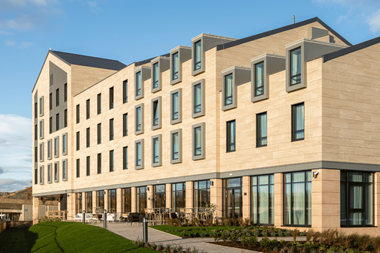Mark Callender and Tony Smedley of Schroder Real Estate make the case that smaller European cities, which are growing and are 'punching above their weight', could offer interesting opportunities for real estate investors.
The world is urbanising. According to the United Nations, well over half of us will be living in cities by the middle of the century. The gravitational pull of global cities will only become stronger as employment opportunities continue to centre on a select number of urban powerhouses and real estate is the obvious way for investors to tap into this trend. There is a very close correlation between real estate and the wider economy, as our chart illustrates. Investors in global cities should be able to share in some of the fastest growing parts of the economy and the best investment returns over the next few years. The world is moving away from sovereign borders and is becoming defined by economically powerful global cities.
Big city attraction
In general big cities, a metropolitan area with population of two million, are enjoying faster economic and population growth than surrounding smaller cities and towns in Europe. While some big cities have a long track record of superior growth (e.g. Madrid, Munich), the last 15–20 years has seen a renaissance in other big cities such as Berlin and London, which for various reasons, had lost their way in the second half of the 20th century.
Big cities have two main attractions. The first is that they are major centres of job creation. In most developed economies the fastest growing sectors are knowledge-based industries such as IT, media and professional services and they tend to cluster in big cities. Quite why is a matter for debate, but big cities clearly have scale – they have more people, more world-class universities, more good schools and hence more ideas; big cities also tend to have a more cosmopolitan culture which attracts skilled migrants and encourages collaboration and they also have a healthy mix of large companies and start-ups.
A big city like London, or Paris is in effect a cluster of clusters. The second attraction of big cities is that they offer a wide range of amenities. Maslow’s Hierarchy of Needs suggests that once people achieve a certain level of prosperity they stop worrying about material possessions and become more focused on their own personal development, their experiences and relationships. Consequently, they are attracted to big cities because there are more like-minded people with similar interests and more bars, restaurants, sporting venues, theatres and museums.
Characteristics of smaller growth cities
By implication, smaller cities and towns in Europe are generally seeing slower economic and population growth. However, while that is true on average, there are exceptions and some smaller cities which have similar characteristics to big cities are also thriving. The table above highlights twenty cities in western Europe which we believe are punching above their weight, or have the potential to. Most of these smaller growth cities have a metro area population of between 250,000 and one million people, although Bordeaux, Lyon and Malaga are significantly larger with metro area populations of between 1.5–1.8 million.
This is not an exhaustive list – there are other examples – but we think these smaller cities are interesting, because their growth springs from a number of different sectors and should therefore be fairly resilient through the economic cycle. We have deliberately excluded some smaller cities which are seeing equally strong growth, but which are heavily dependent on one sector of the economy (e.g. Eindhoven, Luxembourg, Toulouse).
Looking at our list of smaller growth cities the two factors which recur most frequently are tourism and a strong university. Indeed, the two are linked directly in cities such as Bologna, Cambridge and Heidelberg where the old buildings of the university are a major tourist attraction. However, the economic contribution which tourism makes is questionable given that a lot of jobs in the sector are low paid and seasonal. It may be therefore that tourism is really an indication of a good quality of life and that in the same way that some people are drawn to big cities by prestigious museums and theatres, others chose to live in university cities and holiday resorts, because they like their bohemian lifestyle, pleasant climate and leisure facilities.
By contrast the positive economic benefits of a strong university in terms of creating a pool of skilled graduates and business spin-offs are straightforward and apply as much in smaller cities as big cities. The obvious examples are Cambridge, Freiburg, Karlsruhe, Montpellier and Uppsala, but universities have also made a big contribution to the economic success of Belfast, Ghent, Grenoble, Lyon and Utrecht.
Cities need to be nurtured
Yet, while universities can be a real catalyst, there are a number of smaller European cities which have a leading university (e.g. Groningen, Tubingen), but which have not hatched an IT hub, or life sciences cluster. This in turn belies the fact that although higher education is important, there are a number of other factors which need to combine to create a prosperous city. First, research on US cities suggests it is critical that the local business community has an “open-source” culture, which fosters the transfer of knowledge from universities to start-ups and between large and small companies. Cities which don’t have a seed tray of new start-ups and are dominated by large vertically integrated companies are likely to atrophy in the long-term.
A second important factor is to have a proactive local government, which has a long-term plan for new development and transport and which can collaborate with other agencies. This has been a key ingredient in the success of Cambridge. Third, cities need good infrastructure in order to flourish. Both Lyon and Nantes have benefitted significantly from the TGV and the extension of the TGV to Bordeaux next year is expected to encourage some businesses to re-locate from Paris, as the journey time falls from three to two hours. Similarly, the Oresund bridge has made a major contribution to the revival of Malmo’s economy. Fourth, Belfast, Bilbao and Leipzig are to some extent special cases in that they are now benefitting from peace and major political change and are being transformed with the help of private sector inward investment.
Arguably another factor is that smaller cities need to be a reasonable distance away from a big city, because otherwise the gravitational pull of their bigger neighbour will gradually draw businesses and people away. There is some evidence of this in northern England where professional services firms have relocated from Liverpool, Nottingham and Sheffield to either Leeds, or Manchester, although on the other hand, Malmo is clearly benefiting from its proximity and improved access to Copenhagen.
Implications for real estate investors
The main attraction of investing in smaller cities is that yields are typically 0.5–1.5% higher than in big cities, particularly in the office and industrial sectors. For example, prime office yields in Lyon are currently around 4.75%, compared with 3.25% in Paris and prime office yields in Utrecht are around 5.5%, against 4.5% in Amsterdam (source CBRE). These gaps reflect two risks. The first is that the investment markets of smaller cities are inevitably less liquid than those of big cities. 'Gateway' cities like London, or Paris attract a wide range of domestic and international investors and while prices and transaction volumes move up and down with the cycle, there are always buyers active in the market. Conversely, smaller cities tend to be dominated by domestic investors and there is a danger that their investment markets will seize up in a downturn.
The other reason why yields are typically higher in smaller cities is that investors expect to see weaker rental growth than in big cities. At the aggregate level that looks like a reasonable assumption, given that big cities are likely to see faster economic growth and that we haven’t seen the increase in speculative development which we would normally expect at this stage in the cycle. Although there are exceptions (e.g. City of London, Dublin), new commercial building is surprisingly low in many major European cities, partly because new regulations mean that banks are reluctant to fund speculative schemes and partly, because sharp increases in house prices have encouraged developers to concentrate on residential schemes. However, while most of our twenty smaller cities will probably only see modest rental growth of 1–2% p.a. over the next few years, there are a handful (e.g. Cambridge, Leipzig, Malmo) where rental growth could match that in the big cities, at least in percentage terms.
In conclusion, we believe that there are interesting real estate opportunities in certain smaller European cities which share many of the characteristics of big cities, in particular a strong university, good transport infrastructure and an attractive quality of life. While we would not recommend focusing exclusively on smaller cities, we think that for many investors the higher level of yields is fair compensation for lower liquidity and that they could be a useful complement in a portfolio which is mainly invested in big cities.













